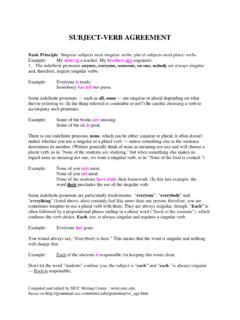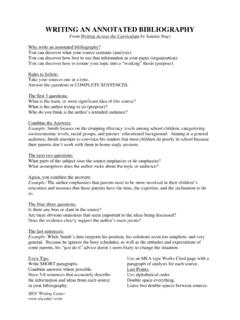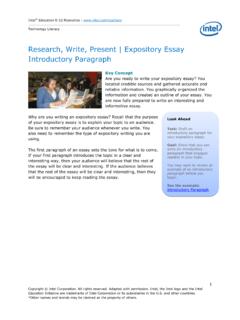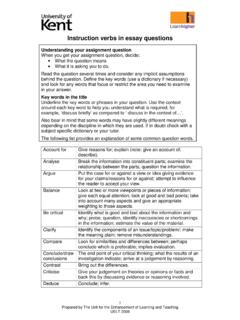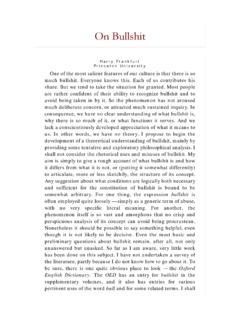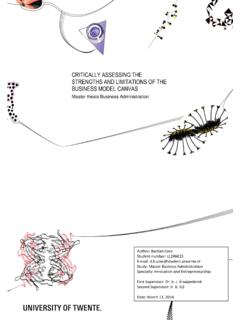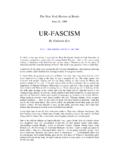Transcription of Parts of an Essay - The Writing Center
1 Parts OF AN Essay Introduction An Essay begins with a brief introduction, which prepares the audience to read the Essay . An effective introduction should: Catch the reader s attention, which can be done, for example, by using a direct announcement, a quotation, a question, a definition , an unusual comparison, or a controversial position; Introduce the topic of the Essay , (in other words, inform the reader of and provide a context for the topic being discussed); Introduce the main idea (otherwise known as the thesis or claim) of the Essay ; Introduce the purpose of the Essay (will it inform, argue, persuade, describe, narrate, classify, ). Body An Essay includes body paragraphs, which develop the main idea (thesis or claim) of the Essay . An effective body paragraph should: Explain, illustrate, discuss, or provide evidence to support the main idea (thesis or claim) of the Essay ; Discuss only one aspect of the main idea (whenever you move on to a new supporting point, start a new body paragraph); Work together with the other body paragraphs to support your Essay s main idea; Work together with the other body paragraphs to create a clear, cohesive paper (clarity and coherence can be achieved through the use of transitions).
2 Conclusion An Essay ends with a brief conclusion, which brings the Essay to a logical end. An effective conclusion should: Provide closure for the reader by reviewing main points (make sure that this review is brief after all, these points have already been fully developed in the body paragraphs), linking the main idea of the Essay to a larger issue, predicting an outcome related to the main idea, giving an opinion, or using a quotation that helps sum up an essential aspect of your main point; Remind readers of the primary focus of the Essay , which can be done by restating the main idea in different words; Avoid introducing new ideas; Avoid apologies. SIUC Writing Center ~write
